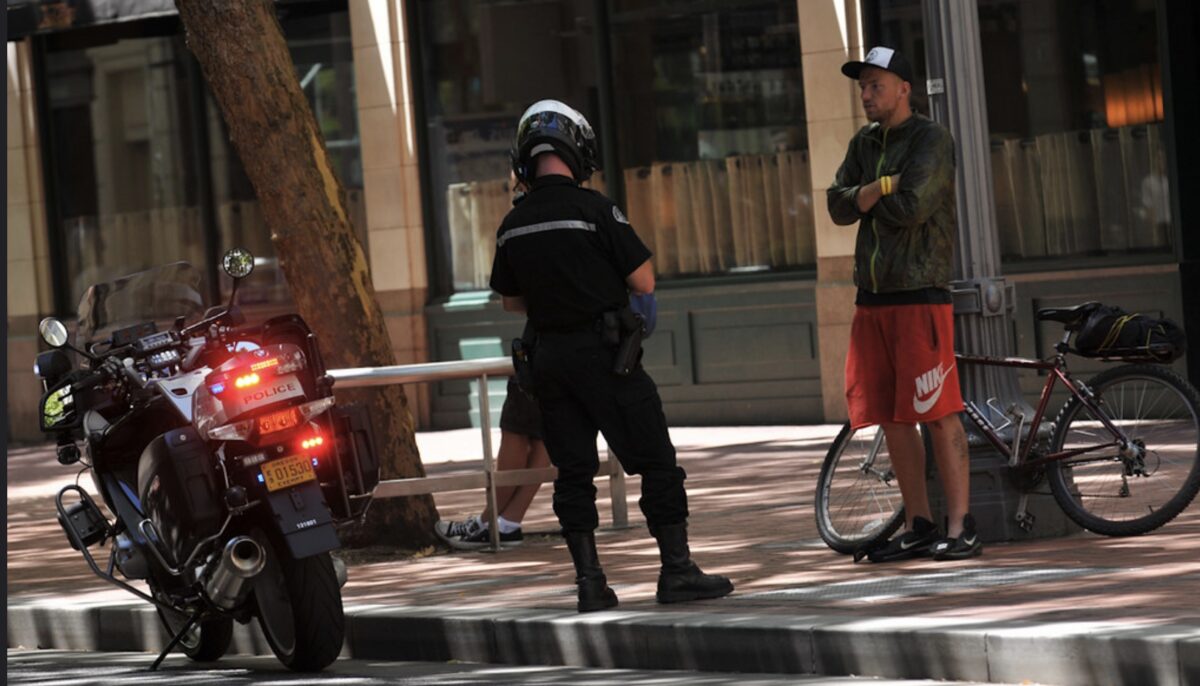
(Photo: Jonathan Maus/BikePortland)
This is the second part of our interview with Portland-based attorney and safety advocate Scott Kocher. In the first half of the interview, Kocher discussed speed limit laws and the “20 is Plenty” campaign. In addition to his legal work, Kocher is on the board of Oregon Walks where he’s working on an in-depth analysis of three years of traffic collisions that killed someone walking. Our conversation has been edited for clarity. (Disclaimer: Kocher’s firm, Forum Law Group, is a financial supporter of BikePortland.)
BikePortland: As a personal injury attorney, you get involved when the system has failed to keep someone safe. I imagine this gives you a unique perspective. What’s your view on enforcement as someone who represents crash victims?

(Photo: Forum Law Group)
Kocher: One of the things I see when I talk to drivers in their depositions is that no one ever thought they’d be the one to cause a terrible crash. Even facing major consequences, the human realities of denial, poor decision-making, and often having major life problems are still there. Seeing that makes me question whether it’s realistic to pin our hopes on people changing their driving behaviors out of fear of killing someone, or going to jail. On top of that, jail or prison isn’t the right place for most of the people who cause serious crashes. Many should not be driving, but sending them to jail has huge personal and social costs, very little deterrence, and is probably less helpful in terms of keeping the community safe than ensuring they transition to not driving as an alternative to incarceration.
As for ticketing, I believe it does have an effect in terms of keeping most drivers within 10 mph of the speed limit, most of the time. That doesn’t mean it’s “working” for safety or other fairness criteria. It’s the other drivers I’m more worried about. And, the way we do ticketing is really broken.
Advertisement
“There’s a lot of potential for simplistic, divisive thinking here. Instead, I see potentially huge win-wins”
BikePortland: This discussion often ends up being framed as a debate between road safety or fairness to people of color for whom a traffic stop can escalate to a traumatic or dangerous interaction with the police. What are your thoughts about that?
Kocher: People sometimes talk about safety as three Es: engineering, education and enforcement. Black Lives Matter has brought increased attention to enforcement. In response, some people have suggested that we can’t support racial justice goals — particularly around interaction between police and the public in the right-of way — because less enforcement would increase dangerous driving behaviors. There’s a lot of potential for simplistic, divisive thinking here. Instead, I see potentially huge win-wins. There’s a pretty big toolkit to improve fairness, reduce police-public interactions and reduce costs in ways that are consistent with eliminating fatal and serious crashes. It includes:
1) Get rid of petty pedestrian offenses. City Code makes it an offense to fail to cross at right angles. The same offenses that are susceptible to being misapplied disproportionately against people who are Black and Brown are the same offenses that were created as part of the early 20th Century transfer of rights from pedestrians to drivers.
2) Before enforcement, engineer streets for safety. No amount of ticketing was going to change the behavior of the man who killed Fallon Smart, or this impaired driver or this one. It should be impossible to drive 50 or 100 mph on our streets.
3) Bring back traffic calming. PBOT got rid of its Traffic Calming Division with budget cuts years ago. Before anyone asks for money for enforcement, ask Council to bring that back, and give it a real budget. Going safe speeds should be intuitive based on how PBOT and ODOT configure and operate their roadways.
Advertisement
4) Where you can’t engineer or calm for safety, replace officer enforcement with cameras. Rotate dummy cameras from place to place, like Sweden does. That way drivers are mostly seeing cameras and slowing down, as opposed to mostly not seeing cameras and getting tickets.
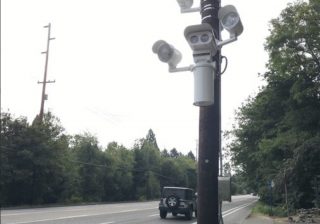
(Photo: PBOT)
5) As a prerequisite for (4), change the fee schedule so that traffic fines go up with income. This would be easy, it costs nothing, and has been successfully implemented elsewhere. It’s unbelievable that we hand somebody a fine that could mean they miss paying rent, while somebody else can pay the same amount over and over and not even care.
6) Change after-hours parking enforcement from police to PBOT. PBOT is set up to do it, because their parking enforcement personnel do it during business hours. Having police respond to calls of improperly parked vehicles on evenings and weekends is expensive, and a setup for racially-charged interactions which have occurred in Portland.
7) Dust off the non-officer enforcement statute, ORS 153.058. This little-known law (a.k.a. the citizen-initiated citation) means you don’t need police officers to enforce most of the laws that are necessary for traffic safety. Non-officers could mean other City employees, such as at PBOT, or other civilians. In the past, PBOT has been reluctant to encroach on traditional police roles, even for minor offenses. Any non-officer enforcement would need to be community-driven, based on need, and implemented with oversight.
8) Last but not least, reassign primary crash response to PBOT. This is overlooked, and potentially a huge deal in terms of reducing police-public interactions by several thousand per year, as well as providing financial and safety benefits.
Advertisement
“I was stunned that Oslo had only one fatality last year. One. It makes me think we can turn our numbers around.”
BikePortland: You expose yourself to a lot of tragedy, which has got to be difficult. Does your activism make that easier? What’s the balance there?
Kocher: I haven’t really analyzed it too much, but as a person who walks and bikes for most trips, and professionally is working with families after crashes… I can’t imagine being confronted with a problem, over and over, and not trying to do something about it. Beyond counteracting burnout, there’s meaning in working with people on fixes that we can see right here in our neighborhoods. I was stunned that Oslo had only one fatality last year. One. It makes me think we can turn our numbers around. (Note: Portland’s 55th traffic fatality of 2020 happened on December 23rd.)
BikePortland: When I take account of all the people I’ve known who have been injured or killed in a car crash, it’s staggering.
Kocher: One in 103 of us will be killed in a car crash. If you have two kids, that makes it about one in fifty that you will lose one of them in a car crash, over a lifetime. There are around 60 people injured for every fatality. It is staggering. Just like there are car dealerships and auto body shops, there are entire industries — including insurance companies and thousands of us lawyers who could be doing other things — that are built around car crashes.
BikePortland: Given your analysis of these tragedies, what do you think are the next steps Portland should take to keep people safe?
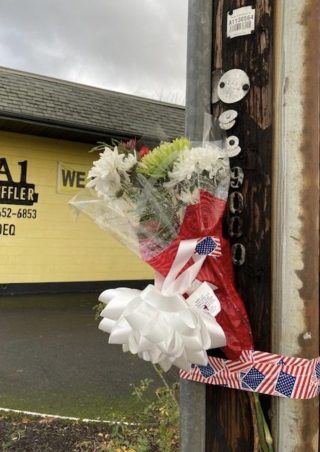
(Photo: Lisa Caballero/BikePortland)
Kocher: Provide street lighting with adequate brightness and uniformity, especially on east Portland arterials. Take trees into account when placing lights. Every place crashes are happening, slow it down. Use the speed setting laws we have, and traffic calming, even on bigger streets, in every neighborhood. We’re operating a system of humans, vehicles and streets, each with known characteristics. Something as simple as narrowing the lane widths can make a difference.
And don’t have drivers turning across the crosswalk at the same time as the walk signal phase.
If a street doesn’t have sidewalks, understand that people of all ages and abilities will be walking and biking in that street. Every shared use street needs to be a speed you’d be OK with your 11-year-old walking on alone. Understand that people experiencing homelessness are living along some of our most dangerous streets. Each agency, including transportation, has the same duties to them as to housed Portlanders. Understand that humans come in all shapes and sizes, and states of mind. We will make human errors. The consequence should not be death.
Keep listening to people. Try new things. This list might be different in five years.
As we enter the new year with a dedication to police reform and racial justice and a new commissioner-in-charge of PBOT, we’re in an opportune policy window to figure out which tools are going to work best, and make a change.



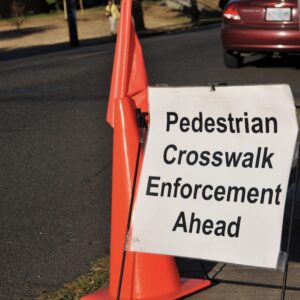

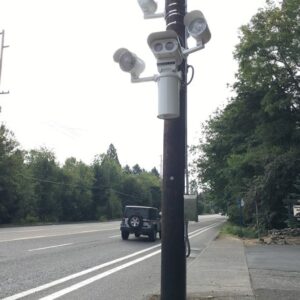
Thanks for reading.
BikePortland has served this community with independent community journalism since 2005. We rely on subscriptions from readers like you to survive. Your financial support is vital in keeping this valuable resource alive and well.
Please subscribe today to strengthen and expand our work.
What a great interview. One line after another of insight and clarity.
Thank you qqq, and the others below, for commenting on the interview’s insightfulness. Scott is really, really generous with his time. He spent a few hours patiently talking with me, and helped me arrive at a clearer understanding of the goal of enforcement. His thought about “ensuring they transition to not driving as an alternative to incarceration” particularly hit home with me.
There’s a big problem with assigning a penalty of “not driving”: Driving an automobile is practically a “requirement of citizenship” in America, as James Howard Kunstler said (https://kunstler.com/clusterfuck-nation/not-happy-motoring/).
Scott probably knows better than any of us that judges are loath to take away driving privileges b/c it means cutting off people from a huge slice of the economic pie – limits where they can live, where they can go to school or send their kids to school, where they can work, etc. The problem will continue until people have choices other than driving a car.
I strongly agree with this sentiment. Sending people to jail for negligent vehicle operation doesn’t solve anything, and is nothing but vengeful — I believe that jails should only be used to house intentionally-violent or repeat offenders.
Instead, just take away their license and force them to commute by bike, transit, or such in the future, and have them do some community service to warn others about the dangers of irresponsible driving. Better that people educate others on why not to do what they did than spend time behind bars doing nothing productive.
I think this is also incredibly important. Seems like a large proportion of crashes occur when people turn right and don’t look over their shoulder (as a runner, it’s easily where I feel the most danger and have had the most close calls). I can think of several solutions: make right turns only allowable on a green signal when the walk signal is red, or use a pedestrian-scramble phase.
A leading pedestrian interval combined with no turn on red can also be very effective. It’s not total separation, but it lets pedestrians get out into the intersection and visible before drivers start turning.
Yes LPI has proven quite effective in NY.
They work in DC too.
Cameras:
Yep, oh man I wish they existed when I was there.
LPI:
https://ggwash.org/view/71937/why-people-biking-should-follow-the-law-more-is-bad-safety-advice
I’ve seen up to 90-second walk signals, but 30-seconds is more common, before the green comes on for cars. And yet nearly all car drivers were patiently obeying the law, at least in 2019 when I was last there. On the other hand, there are so many layers of police in DC one can never be sure the driver in back of you is some sort of police officer or not.
I used to live near a signal that had a two digit count and had to wait through one and a half cycles for it to change, so 99+30ish. It was hell. DC has a loooong way to go.
Yes, I totally forgot to list that as a possibility as well! So many options that are better than our status quo and would be easy to implement.
I’m afraid we need “no turn on green” as well. People are expected to use the crosswalk at the same time turning drivers are coming up behind them and turning. This would, practically, mean pedestrian-only phases at each signalized intersection. Or, turn-only phases and dedicated right turn lanes, which we mostly would not have room for.
There are a whole lot of people driving without a license. How would this be enforced?
In that case we enter the “repeat offender” territory. They did something illegal to lose their license in the first place; if they drive again without a license then they’re by definition a repeat offender.
And if they never had a license in the first place, then I’d be inclined to consider that similarly to reckless driving.
Require a DL to purchase gas.
This is unworkable because people also use gas for things like lawnmowers. But perhaps requiring a license to put gas in vehicles only would work.
People involved in deadly hit-and-runs don’t deserve jail, whatever.
And, your point is?
I really like the idea o a lot of mobile dummy cameras mixed in with real ones. I see people speeding up right after they go through intersections with speed/red light cameras since they know they are home free once they have made it past the fixed location camera. It seems like most people on a regular car commute figure out where they have to slow down after a couple of months with the cameras. Adding dummy cameras that are moved around will make people less likely to speed in places they think are camera free. The fine based on income is a great idea also. Good interview!
Jon, the ability to alter behavior relies heavily on the “schedule of reinforcement.” If people driving cars were aware that at any point, a speed camera may be recording their velocity, very few people would drive with impunity. The only reason we don’t have this is people want to drive without repercussions and the people in positions of power also want to drive without consequences.
Changing the law to allow ubiquitous, generic speed camera boxes, with a regularly shifting modicum of actual functioning cameras would have an immediate a lasting effect on speeding/behavior. It’s really that simple. In addition, positive reinforcers work as well. There are programs that benefit neighborhoods, for example, by relaying a donation on behalf of good drivers as they pass.
I had a personal issue with traffic cameras. I was driving at under the speed limit on Beaverton-Hillsdale when someone passing me triggered the camera. This was before the robot cameras when they had a camera in a van. There were 3 photos of the passing car; first one behind me, second one even and third on with it in front. At the time of the incident the 3 people in my car thought it was funny that the other guy was going to get a ticket. Not so funny when the ticket showed up at my house. I went to court with the the 2 witnesses. The officer that was in the van pro forma lied about what he saw and did. The judge ignored the photos. I got a fine. I am all in favor of cameras if they accurately penalize people speeding. Not so much if they are just a way to randomly penalize people. I’m just glad that I was not in court over a criminal issue or civil liability as I don’t really expect that the court system would be any more accurate.
Portland should stop allowing traffic enforcement to be a drain on the general fund budget. Require excess revenues from speed cameras to be used to reduce speeds on the street, if you’re afraid they will engineer streets just to extract maximum ticket revenue, I guess. Apparently it’s because we have no municipal court, the fines paid by motorists go to Multnomah County (and then into what budget?) Nobody seems to know how this works but we spent like $20M/yr from our general fund (not car/gas tax money) on the traffic division alone.
This interview dovetails neatly into the book I just finished – “Crash Course: If You Want to Get Away with Murder Buy a Car” by Woodrow Phoenix (https://www.powells.com/book/crash-course-9781951491017 – the War on Cars did an episode with Phoenix on the book).
I’ll second/third/etc the others that this interview with Kocher is very insightful.
These are great, actionable steps to improving traffic safety while decreasing interactions between armed officers and the public for things that most certainly do not require that. Not just keeping them from increasing, but actually decreasing them.
I do have concerns about the citizen initiated citations, especially given the growing number of incidents we hear about (and see via video) where people decide a law has been broken (often by a person of color) and that they must intervene. I wouldn’t want to incentivize more of that behavior…
But all the other items are spot on. I’d love to see these broken down into who the decision makers are to make them a reality – some are local, but some are state (traffic fine citation structure), and those certainly take different levels of strategy and capacity.
Thanks, Scott!
Quote: “I do have concerns about the citizen initiated citations….”
Ditto! Can you imagine how many Karens would be knocked out cold on a daily basis as they tried to play PoPo in PDX? 🙂 Be a bunch of toothless Karens roaming the street in less than a year! 🙂
The idea of transferring traffic enforcement to PBOT sounds great until you understand City Council’s long-term relationship with PBOT. If at first City Council decides that PBOT must take over another bureau’s function that is currently paid for with general fund money (property taxes, hotel taxes, etc), at first they may give PBOT the funding it needs. But within one budget cycle they’ll cut that funding by 10-30%, then the next budget cycle an additional cut, and by the 4th budget cycle they’ll require PBOT to use its parking revenue to pay for traffic enforcement, instead of using it for sidewalks, bike facilities, rose lanes, etc.
So if you want some other bureau other than Police to do traffic enforcement, you need to consider what services you are willing to cut in later years from that same bureau to pay for traffic enforcement. I can imagine the public reaction if PWB (Water) was in charge of traffic enforcement – you speed and you’ll get your water cut off – but then we’d be using part of our water bill to pay for traffic enforcement within a few short years.
Just one more reason we Portlanders need to abolish the ridiculous commission-style gov’t and adopt a saner structure with more stable funding and services.
While I think there is some merit to fines being income based I think the larger need is for fines to step up on repeat offenders. If you get one speeding ticket over a 10 year period it probably doesn’t need to be very much money to get you to continue doing what you are already doing which is driving safely nearly all the time. However if this is your 3rd ticket this year then you clearly have a problem and the fines are not large enough to change your behavior. If the amount of a fine doubled for every previous ticket you had gotten over the last decade we would be doing a much better job of targeting the most dangerous drivers with the highest fines.
Even if the fines do not step up, your insurance does. Maybe not quite the same thing, but the ratcheting mechanism you want is already present there.
I also believe that in Oregon, too many tickets will lead to your license being revoked.
Insurance nowhere near doubles per offense. I do think that things like the monitors that insurance companies are allowing people to install for a discount have the chance to reward good drivers, but unless they are mandatory they will have a limited impact.
Insurance companies understand the cost of your ticket better than anyone. Why would doubling the fine be better than measuring the actual cost that a ticketing event represents?
My fear is that those monitors will effectively become mandatory; if all the good drivers get them, then anyone who doesn’t can be flagged as someone who possesses adverse information about their own driving, and up go the rates. I don’t want to be monitored, though I’m going to need to get used to it; there is no way a robot car is not going to be tracked.
Insurance actuaries are predicting the cost of your behavior on them, not on society. Their cost may be associated with regulatory efforts to change behavior through fines or legal responsibility. But insurance companies aren’t looking out for the public good when they set premiums.
Good points. I suppose additional answers might be that an easily understood scale of escalation might have its own benefits, or that government sanctions to protect the public good should be independent from whatever your private financial arrangements you have made.
I’m not convinced on the particular escalation cycle, but I’m now on board with the concept of increasing fines for repeat offenders.
“Legal responsibility” is connected with public good even if insurance companies might not care about that per se. If you do more damage, you pay more.
Note that insurance rates are not pegged to your income and simply jacking up rates until people can’t pay them will only increase the number of people driving without insurance. Also, fairly well to do people often have little income on paper.
There is an old expression ‘statistics don’t lie, but liars use statistics’. This is a classic example. No, 1 out of 103 of us are not going to die in an automobile accident. What is true is that IF you are in an automobile accident, your odds of dying are 1:103. But, the average person gets in an accident every 18 years. Of course, the writer, and Mr. Maus, know all this, but choose to lie.
I believe that is a lifetime cumulative risk, not an annual risk, and not a once-you’ve-already-crashed risk.
https://www.nytimes.com/2019/01/14/us/opioids-car-crash-guns.html
Here’s another source (106 not 103 but you get the point): injuryfacts.nsc.org/all-injuries/preventable-death-overview/odds-of-dying/
That’s drawn from death certificates, not tracking people who have been in automobile accidents.
Here’s another with similar results, broken down by demographic and with methods given: http://www.amjmed.com/article/S0002-9343(20)30363-6/fulltext
In 2018 2829205 people died in the US, there were 36,560 deaths caused by motor vehicles in that year. That means that 1.29% of US deaths in 2018 were due to automobiles. It seems like a pretty big stretch to say that it is a lie that a number near 1 in 100 deaths are related to automobiles.
Most Americans are unaware how many people die every year from all causes, and many people would prefer to not know given our common phobia about death. Even without the pandemic, we were on track to have roughly 3 million deaths this year (2020) nationwide, up from 2.9 million in 2019. Keeping in mind that most people die from multiple causes, cancer and heart disease each account for over 600,000 of those deaths every year.
Speaking of Autos, up to nearly 1000 people die each year from Autoerotic asphyxiation.
Sincerely hope the solution to this isn’t more cameras.
Fantastic interview and perspective. Would be great to have a transportation commissioner with this type of insight.
“One of the things I see when I talk to drivers in their depositions is that no one ever thought they’d be the one to cause a terrible crash.”
This quote is also applicable to the “85th percentile rule” and why it’s fatally flawed. I know transportation agencies are dropping it, but the concept behind it–that people naturally pick a safe speed to drive–lives on with drivers.
Actually, they–even the 99th percentile drivers–pick the speed they THINK is safe. Similarly to the quote, no driver in a crash has ever thought they were driving too fast until it was too late.
Actually I’m betting that millions of drivers “thought” they were driving too fast before an incident occurred; but a lot fewer would admit it to the Police. 😉
Also, at any given time tens of millions of drivers know they are driving too fast, but do it any way and nothing bad happens.
I read the article and all of the comments. My thoughts:
1 – Not one word on what cyclists can do to be safer given the reality that motorists are not looking out for them that much – the motorist is concerned with getting hit by a car or truck, not by a bicycle, so that is what they are most attuned to watch for.
2 – How’s that vision zero working out for y’all?
3 – See that photo at the top of the page? One guy has a gun and ALL the power; the other guy has NO power. None. A LOT of people believe the guy with NO power should not even have the option of carrying (or even owning) a gun, knife or any weapon. Look again at the picture – how do you like that balance of power? Read any history lately?
4 – Quote: “BikePortland: This discussion often ends up being framed as a debate between road safety or fairness to people of color for whom a traffic stop can escalate to a traumatic or dangerous interaction with the police. What are your thoughts about that?”
What’s up with POC traffic stops escalating “to a traumatic or dangerous interaction”? Is this less likely to occur with Whites? If so, why?
5 – Quote from the answer to the BP question in #4 above: “Having police respond to calls of improperly parked vehicles on evenings and weekends is expensive, and a setup for racially-charged interactions which have occurred in Portland.”
There it is again: “racially-charged interactions”. Hmmmmmm……
When can Kocher please run for city commissioner and be in charge of transportation?
A ticket for riding on the sidewalk is a complete waste of time all around and shows that the system is not working for people who chose not to drive. Personally, I would be taking the lane there, but I know not everyone is comfortable with that.
You might want to disclose that Scott Kocher’s law firm advertises on your site. Remember there are huge societal costs imposed on American society by personal injury lawyers due to excessive litigation. Perhaps you could have asked how tort reform could benefit transportation safety? We could use the billions earned by trial lawyers (who get 33-40% of the settlement intended for the victim!) and put it towards improving traffic safety. Most other highly developed democracies operate with a fraction of the number of attorneys that we have in the USA.
https://www.researchgate.net/figure/Number-of-lawyers-in-different-countries-of-the-world_tbl1_270105553
https://www.alllaw.com/articles/nolo/personal-injury/lawyers-fees.html
Javier, the connection appears in the disclaimer at the top of the article. You might want to read the article more closely.
I think most of us know that valuable insights can come from advertisers, anyway, and there’s nothing in Kocher’s interview to indicate he’s shilling for his business.
Hi Javier,
You might want to read the article more closely. You’ll see that we have a disclaimer. Thanks.
Good for you for putting the disclaimer in the article. Sorry I missed it.
Still would have been good to ask him about tort reform. Consumers and accident victims would be so much better off if trial lawyers weren’t skimming off 33-40% of compensation meant to go to the aggrieved parties.
I’d guess anything Kocher said about any legal issue would be worth reading. Otherwise, I disagree with you.
First, getting paid a percentage of a judgment is a legitimate way to get paid, not deserving the negative connotations of “skimming off”. Large amounts of legal work can go into cases where clients receive large judgments, and not every case lawyers work result in large judgments (or any). So seemingly huge payments to lawyers don’t mean lawyers are hitting the jackpot.
Second, saying the compensation is “meant to go to the aggrieved parties” is wrong. People deciding those judgments know that those parties will have large legal bills, so don’t expect them to pocket the whole amount.
Third, is it an issue anyway? The lawyers we’re discussing are working for the victims. The settlements (I assume) are against drivers, insurance companies, cities or states, or auto companies. Large judgments against them should benefit safety by encouraging those parties to do things to avoid future judgments. Reducing the potential amounts of judgments lessens the incentive to improve safety.
Saying “We could use the billions earned by trial lawyers” to improve safety makes sense at some level, but it doesn’t mean focusing on trying to limit judgments, or trying to take money out of winning lawyers’ pockets. it means focusing on taking steps exactly like Kocher mentions to improve safety, so that there will be less cases to take to the courts in the first place.
Good article from the Atlantic on suggested adjustments to our tort system and how it is related to transportation safety.
It states:
“We could do better. The right place to start is to look beyond our borders. The most sweeping change would be to follow New Zealand, where no one injured in an accident can sue in court, but everyone is compensated from a sensible social insurance plan”
https://www.theatlantic.com/national/archive/2012/07/why-we-need-to-readjust-the-tort-system/259208/
Why would he ask a question that has nothing to do with the subject of the interview (transportation law)? Tort reform only applies to civil trials, not traffic trials which are—or may be handled as if they are—criminal trials.
There is literally zero relationship between the amount of money personal injury lawyers make (which is what your citations refer to) and how governments spend their transportation dollars, which laws they pass to protect vulnerable road users, or how traffic fines are enforced and subsequently allocated.
Actually Mr, Kocher is a personal injury lawyer and therefore is well versed in tort law. Tort law is what he uses when he sues people and entities on behalf of an injured party. Of course, most personal injury lawyers are vehemently opposed to sensible tort reform because they are richly rewarded by the current system.
“We could do better. The right place to start is to look beyond our borders. The most sweeping change would be to follow New Zealand, where no one injured in an accident can sue in court, but everyone is compensated from a sensible social insurance plan”
-Atlantic Magazine article
I think this article might broaden your perspective.
https://www.theatlantic.com/national/archive/2012/07/why-we-need-to-readjust-the-tort-system/259208/
Explanation of Personal Injury Law:
Personal injury cases fall under the area of law known as tort law. A tort is legally defined as “a civil wrong or wrongful act, whether intentional or accidental, from which injury occurs to another.”
When I reflect on why Oslo had ONE fatality this year and Portland had 50+, I can’t help thinking about how much harder it is to get a driver’s license in Europe than it is in the good ol’ US of A. Next time you get a chance to talk with an adult driver from Germany or Sweden or France, ask the person to describe the course she or he took to get a driver’s license. It will likely involve mandatory minimums of time on expressways, city streets, and other driving situations; practical and written examinations; and even time in a traffic simulator, which provides practice in handling situations (like meeting an emergency vehicle) that the student driver is unlikely to encounter in training. In other words, a country like Norway does a MUCH better job of training drivers.
I know from my own kids having gone through driver-ed classes (and seeing how they drive now) that Oregon driver training is nowhere near as rigorous as it could or should be. But more rigorous training is unlikely to happen b/c the huge automobile lobby would never allow legislators to create better training for new drivers. And we’re all complicit b/c driving a car is for all practical purposes a requirement of citizenship in the US.
“driving a car is for all practical purposes a requirement of citizenship in the US”
How very true that is. I’m an able-bodied person who never learned to drive nor have I ever possessed a driver’s license, and I’ve long ago lost count on all the times I’ve been treated like a third-rate citizen in this country. I’ve been denied employment many times for jobs that required no driving whatsoever (the potential employers often cited my lack of a driver’s license for not hiring me); much of the country is effectively off-limits to me unless I’m a passenger in a car; and of course the whole pandemic test regime is 100% geared towards people driving their cars to testing centers. Of course there are pluses – in spite of being grossly obese, because I ride every day and have a balanced diet, the doctors never find anything actually wrong with me; I use Amtrak annually more often than most people do in their lifetimes; and I’m more motivated on my bike and transit volunteerism and advocacy, if only for self-interest and self-preservation.
When I took driver-ed as a high school class in the 70s, we did all that you describe, except for simulators – didn’t exist in schools then. Now there are good videos for your computer where you interact with traffic, spotting hazards, etc. You can sometimes get reduced insurance rates for passing the interactive tests – particularly if required by your employer.
The car lobby would not care at all if more training were required, but leftists would squeal like a sow giving birth to a litter of broken bottles if you proposed it. I can hear it now: “That’s racist”, “That discriminates against POC”, “The tests are designed by and for Whites”, blah, blah, blah. Equal opportunity is not good enough for leftists – they DEMAND equal outcomes, even if it is detrimental to society and the nation.
It astounds me how all us humans around the world do things so differently.
Your numbers on traffic deaths in Oslo makes me think of COVID deaths.
SOUTH KOREA (~52 million people) 879 COVID-19 deaths
USA (~330 million people) 341,000 COVID-19 deaths
How can we be more like Oslo and Korea? Trade-offs I suppose…..
Norway (5.4 million people) 436 COVID-19 deaths
Sweden (10.4 million people) 8,727 COVID-19 deaths
Netherlands (17.4 million people) 11,525 COVID-19 deaths
Oregon (4.2 million people) 1,468 COVID-19 deaths
North Carolina (10.5 million people) 6,748 COVID-19 deaths
I’m not sure complicit is the operative term.
Active transportation requires proximity and transit requires density to work — one or both of which don’t apply to most people. Engineering, education, enforcement, electric “assist” and the like make other options more accessible but the fundamental challenges remain.
Reality cannot be legislated away, and calls for sweeping changes that ignore practical realities only cause people to dismiss good ideas — much the way that months of rioting only turned a huge number of people who would otherwise hear out concerns and be willing to make some changes against BLM.
There are no silver bullets. All 8 steps listed in this article are actionable. But even if people got serious about all 8, realizing the actual benefits would be a slow and incremental process.
Kocher put it well
.
I’m frankly surprised by how popular “get tough” approaches are with people here even if they’re popular with the public in general. Aside that they’ve not proved effective. they’ve disproportionately punished people of color and marginalized communities It’s the war on drugs all over again, just with traffic.
I agree with everything Scott says and the changes he is calling for. In my opinion, many pedestrian-involved crashes are the result of not only the too high speeds of cars, (and often too-high speed limits), but also by the lack of having lighting consistently applied to crosswalks. Using existing street lighting standards may be adequate to enable other cars to be seen, but they are obviously not adequate to allow drivers to see pedestrians. Auto headlights have been allowed to become brighter than ever, since we went beyond standardized “sealed-beam” headlights. Brighter headlights are thought to be safer, but on city streets the increase in glare directed at oncoming drivers makes it more difficult for drivers to see pedestrians even if they were illuminated. 1/2
Or the drivers just don’t care.
I’ve been 1/2 way across a neighborhood street in a crosswalk and car doesn’t even slow down as it goes by me a couple feet away.
I’ve been walking down my neighborhood street and a person coming from a side street was more interested in seeing someone coming from their left so that they could run the stop sign than seeing me 1/2 way across the street and would have plowed into me if I had just been a couple seconds slower.
These were on well lit up intersections and I wear a reflective safety vest. In the 2nd instance I had 2 flashing LEDs on my chest. It wasn’t the environment, they just didn’t care about anyone but themselves.
Though I don’t doubt there are many places that need improvements in lighting, etc, but unfortunately, many just don’t care about their fellow humans anymore.
Sorry about your close calls Agree with your points. Those are the people for whom we need enforcement, The only thing that makes these type of people change their behavior is having to pay out their own hard earned $. Traffic cameras aren’t going to help with these type of infractions. That is why the concept of “enforcement is biased and therefore can’t be done” is doomed to failure. Given Hardesty’s approach to enforcement probably won’t see any improvement on this issue until she is (hopefully) voted out of office in 2022.
Agreed, Doug. Fremont, CA had a lot of success in improving street lighting and watching pedestrian deaths decrease. So did Detroit, MI.
Fremont
Detroit
There are two ways to solve the headlight-glare-obscuring-views-of-pedestrians problem. One way would be to limit headlight brightness, when on city streets, to well below that which is now allowed for low beams.(A regulatory near-impossibility given that auto makers follow national mandates, and having Oregon headlight rules would be difficult to pass) The other way would be to increase the lighting of city streets to compensate for the increased glare of oncoming headlights. (Also, yes I know that new headlights have these sharp cutoffs in the pattern that are supposed to keep them from blinding other drivers. But that only works on level roads. If there’s a slight rise in the road, say at an intersection, or at the crest of a hill, then the new headlights will be aimed upward enough to blind oncoming drivers.) This second approach is to place streetlights on arterials at every crosswalk (marked or unmarked), upstream of the crosswalk, and aimed so as to illuminate the pedestrian on that half of the street. Another light is needed on the other side of the arterial, to illuminate pedestrians from the other side, for those drivers. Take footcandle readings falling on the pedestrian at the curb and while crossing. 2/2
Like all the ideas above. Especially bring back safety team. We should pay for it by closing out the freight team. They obstructed activist every step of the way and include people who don’t live in the city. It’s a regional function; should be administered and payed for by Metro. Not the city who tends to swing PBOT around at the same rate as PBOT Commissioners. Local PDX election laws weaken outer PDX voters and enables out of town corporate interest through the Freight Committee.
Long past time for PBOT to send the so-called Freight Committee packing!
I have never understood why we don’t hire more police officers to simply do traffic enforcement? The amount of the tickets written would certainly offset the cost of their salary, pension, benefits, etc. Heck whenever I ride on Terwilliger I would say 75% of the people are speeding. In my 26 years of riding this road on a regular basis I have seen a radar trap once. If people know the chances of being caught are minimal, they will keep on speeding.
Good idea but can’t hire more officers or write tickets in Portland….they’re racist say the radical leftists and police haters. Then they complain about all the traffic deaths even though they are part of the problem.